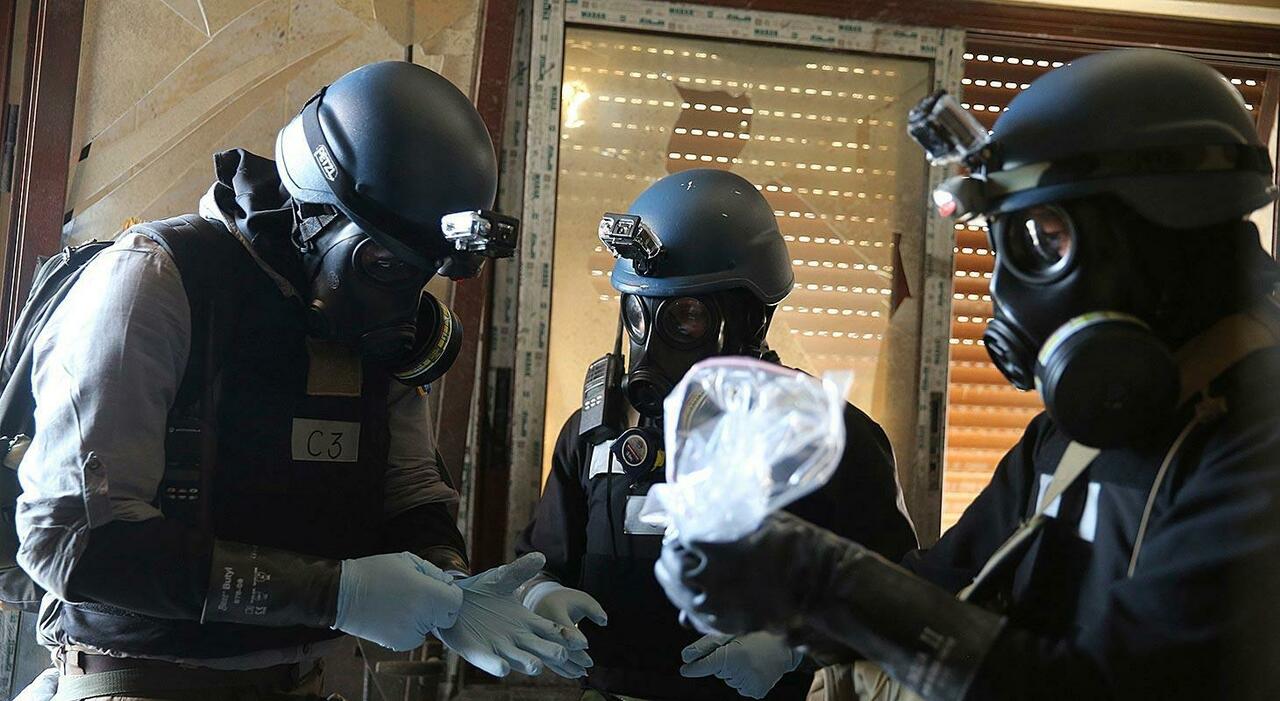Thursday 2 May 2024, 09:49 - Last updated: 16:55
Russia would have used Chloropicrin, a banned chemical substance, against Ukrainian troops. Confirming the accusations is the U.S. State Department, specifying that "the use of such chemical substances is not an isolated incident and is likely driven by Russian forces seeking to dislodge Ukrainian forces from fortified positions and gain tactical advantages on the battlefield". But what is chloropicrin? What are the dangers of this chemical agent?
Ukraine, the city of Chasiv Yar is scorched. USA: Moscow used chemical weapons against Kiev
The Institute for the Study of War had already denounced the use of a chemical agent, chloropicrin against the Ukrainian military forces at the end of January, "continuing to violate the Chemical Weapons Convention (CWC), of which Moscow is a signatory. The spokesman for the Ukrainian forces group of Tavriisk, Colonel Oleksandr Shtupun, reported yesterday that Russian forces are using chemical weapons against Ukrainian positions in the direction of Tavriisk, in Kherson. According to Shtupun, the Russian forces have launched attacks probably using K-51 grenades containing chloropicrin. The U.S. study center explains that it is a substance mainly used as a soil fumigant, which can be fatal if inhaled.
What is chloropicrin
Chloropicrin (also known as nitrochloroform) is used in agriculture as a soil fumigant and is banned for military use. It can be released into the air with sprays of liquids or can contaminate water and food. It can be absorbed through inhalation, ingestion, and skin pores. It is a chemical agent severely irritating to the lungs, eyes, and skin. Inhalation of vapors in concentrations higher than a certain threshold for ten minutes is generally lethal, causing suffocation due to acute pulmonary edema.
Dangers
Chloropicrin is harmful if ingested, very toxic if inhaled, and strongly irritating both as a liquid and vapor. The presence of not yet harmful quantities of the product is immediately perceived due to the very penetrating odor and the strong tear-inducing effect; this characteristic constitutes an extremely effective signal to avoid overexposure, forcing people to immediately move away from the source of contamination before suffering damage. Prolonged exposure to harmful concentrations of chloropicrin cannot be voluntarily tolerated, but it might still occur if people at the site of the incident were unconscious, unable to move, or confined in a limited space. The product then can be fatal if inhaled or ingested. Very serious damage can be caused by contact of the product in liquid state with the eyes or skin due to its strong irritating power. Exposure to vapor concentrations in the atmosphere even very low (0.1-0.3 ppm, i.e., 0.1- 0.3 grams of product per cubic meter of air) can cause immediate tearing followed by irritation to the eyes, respiratory system, and contaminated body surfaces.
Symptoms
Exposure to vapors, even at low concentrations, produces tearing and irritation to the eyes, nose, and throat and if continued causes painful burning to the eyes up to temporary blindness. Exposures to high concentrations of vapor and for prolonged periods also cause coughing, nausea, vomiting, difficulty breathing due to irritation of the respiratory system and can also be fatal due to the occurrence of congestion, hemorrhages, severe bronchitis, and pulmonary edema. The liquid product causes severe chemical burns upon contact with the eyes and skin and is very toxic if ingested as such due to the contact action on the mucous membranes of the digestive system.
Precautions
The product develops toxic gas. In case of spillage in a closed environment, immediately remove people and domestic animals present. Evacuate contaminated areas and lead people and domestic animals in danger to areas located upwind and at least 300 meters away. Emergency personnel must be equipped with complete chemical protective suits and positive pressure compressed air self-contained breathing apparatus or full-face masks equipped with combined type A2/P3 filter. Take damaged or leaking containers outdoors to an isolated area. If possible, always operate upwind.
The poisoning of Abramovich
It would not be the first time Moscow uses this chemical agent. Roman Abramovich would have been poisoned with chloropicrin during peace talks between Ukraine and Russia. International experts, cited by the Daily Mail, had revealed it. The oligarch, according to what had emerged, suffering from the effects of poisoning - including suffocation and continuous tearing - had said to those caring for him: "Are we dying?" As reported by investigative journalist Christo Grozev, cited by the British newspaper, a team of experts had agreed that chloropicrin was the chemical substance most likely used in the attack. The billionaire, said the New York Times, felt so ill that he had asked the doctor examining him if he was dying.
© ALL RIGHTS RESERVED
This article is automatically translated
